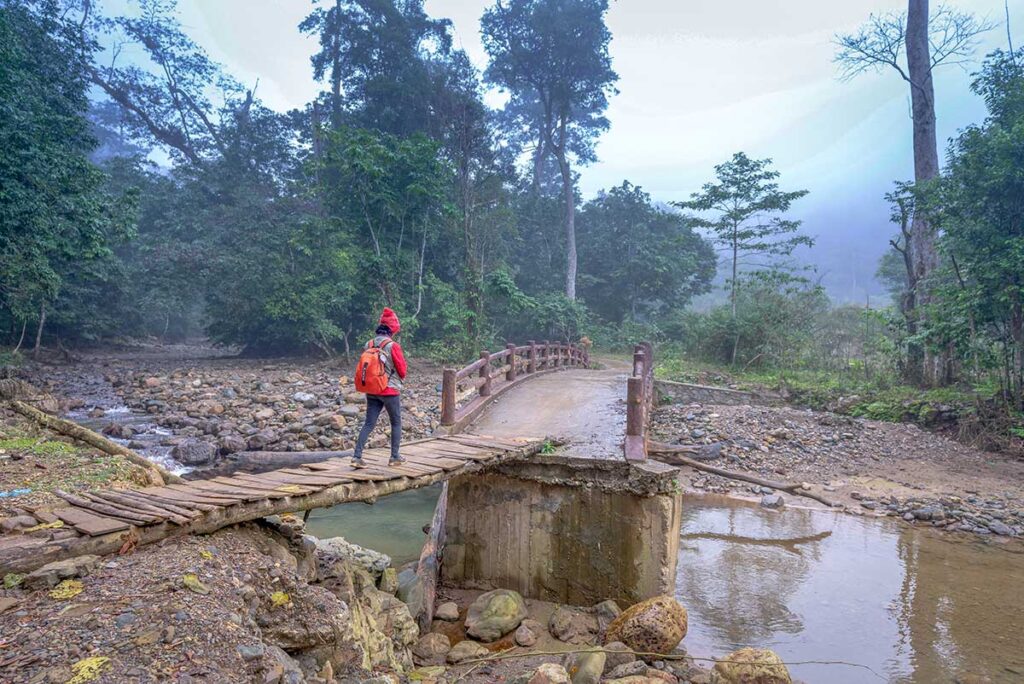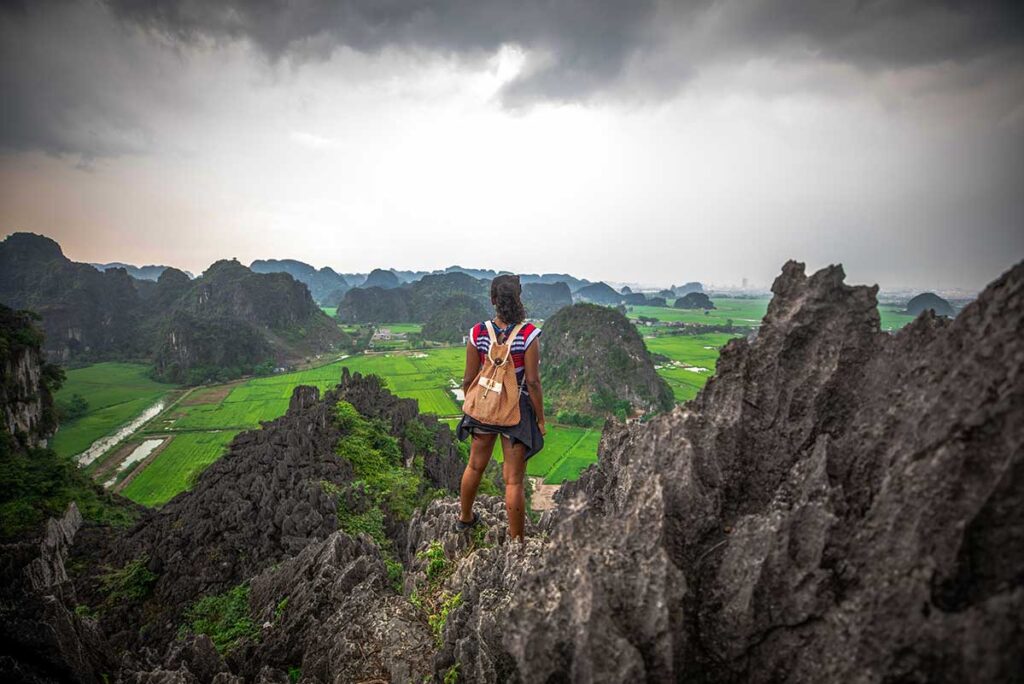What is Xuan Son National Park Like?
Location and Landscape
Xuan Son National Park is located in Tan Son District, Phu Tho Province, about 120 kilometers northwest of Hanoi. It shares the same district as Long Coc Tea Hills, making it easy to combine both into a short trip.

The landscape is mostly limestone karst, with steep hills, forested valleys, and a network of caves. You’ll also find open farmland, streams, and quiet roads winding through the mountains. The highest point in the park is Ten Mountain (Núi Ten), which rises to around 1,300 meters and is a popular trekking destination.
Nature and Wildlife
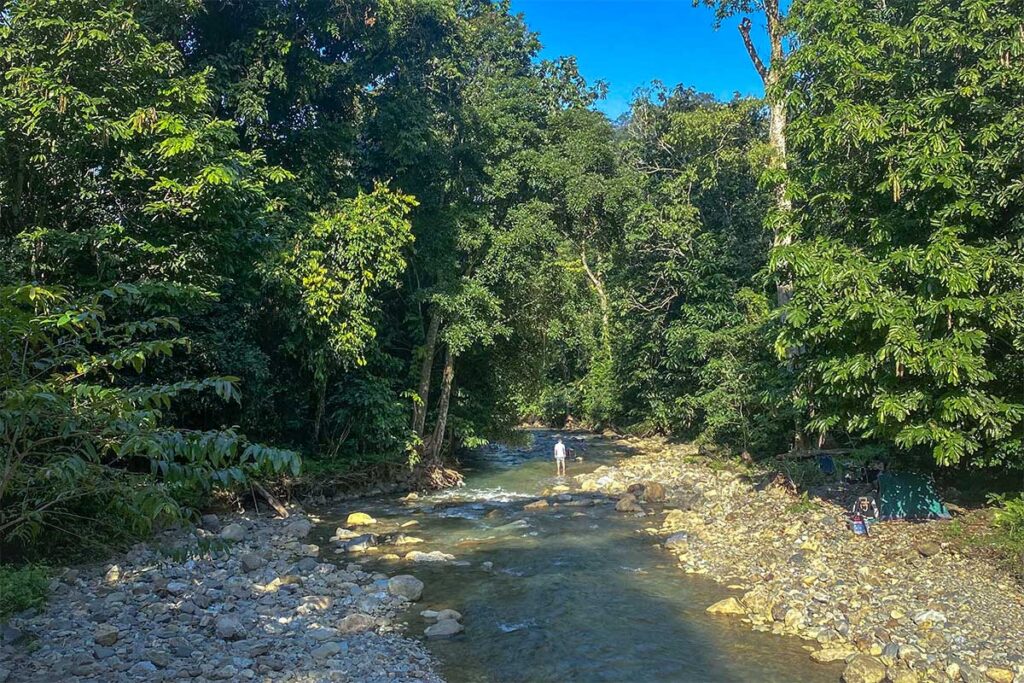
Xuan Son is still a wild and mostly undeveloped park, which gives it a peaceful, off-the-beaten-track feel. It’s home to a wide range of plant and animal life, though much of the wildlife is hard to spot due to dense forest and low human impact.
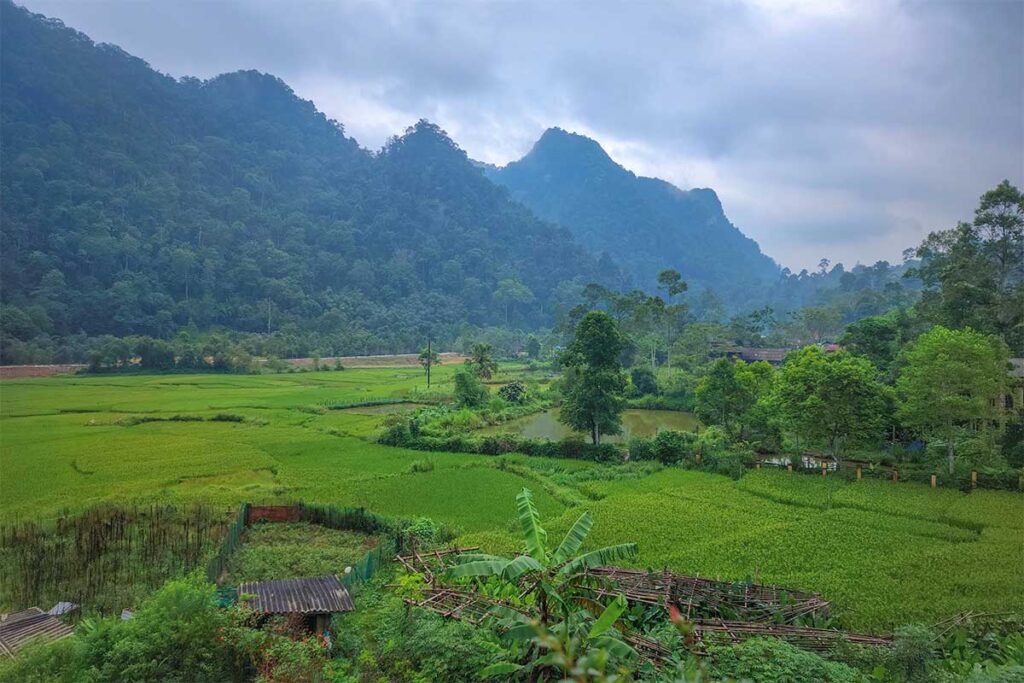
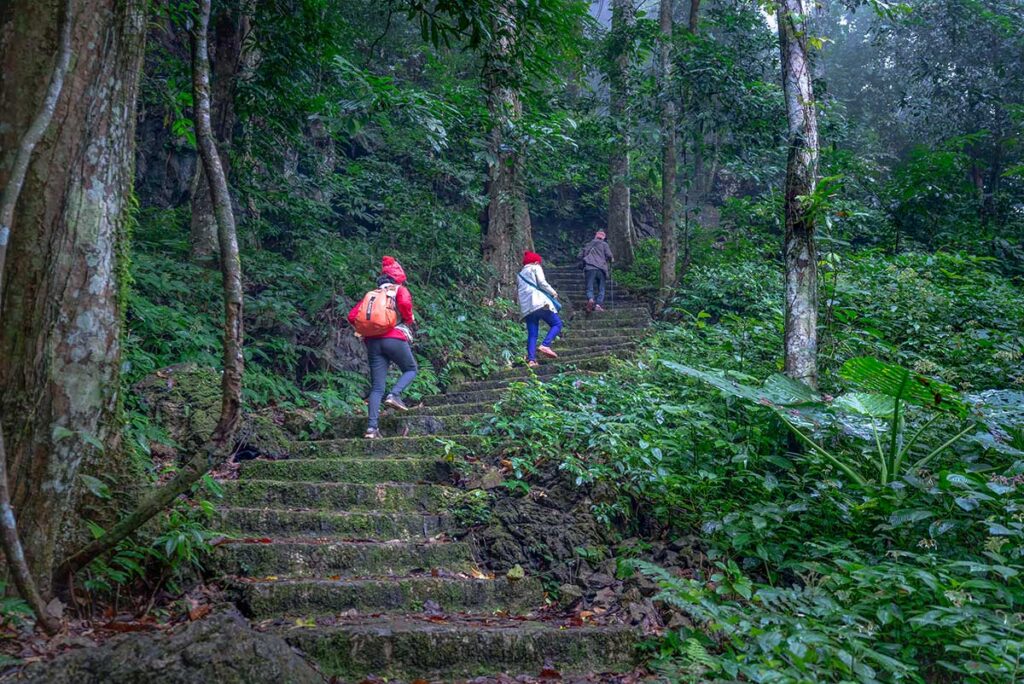
The park has recorded over 1,200 species of plants, including many medicinal and useful varieties still used by local communities. Rare animals like gibbons, leaf monkeys, and bats are said to live here, but sightings are rare and the populations may be very small. What you will notice instead is the rich vegetation, bird sounds, and fresh, clean air that makes walking here especially enjoyable.
Local Culture
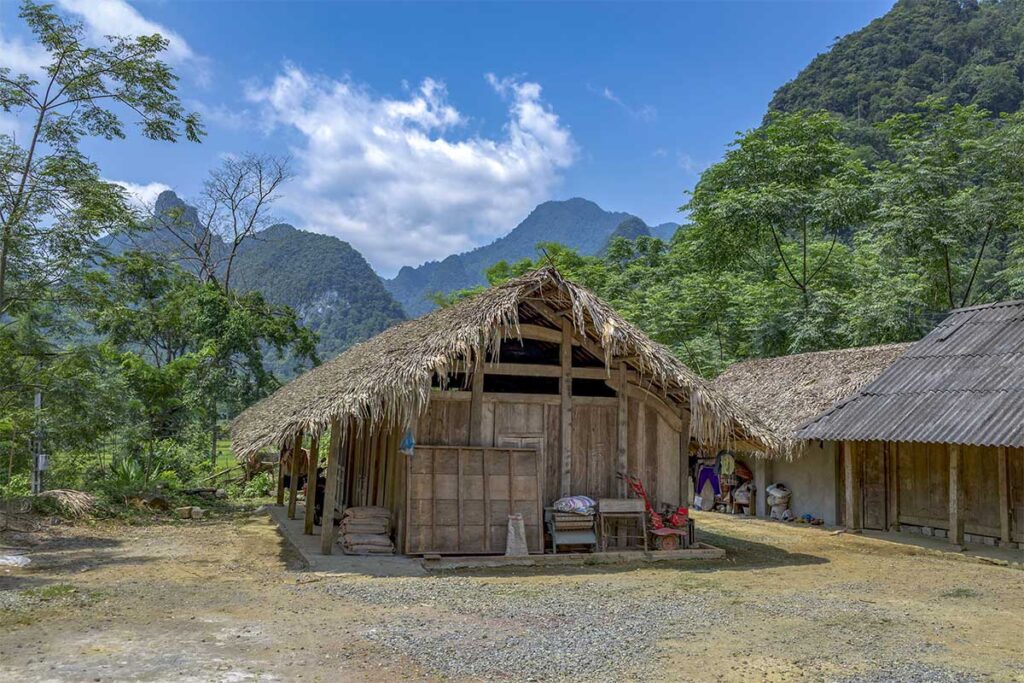
The park is also home to Muong and Dao ethnic minority groups, who live in small villages scattered throughout the valleys. Most families still live in wooden stilt houses, grow their own food, and maintain a simple, quiet lifestyle tied closely to nature.
Staying in one of these homestays gives you the chance to try local dishes like spring fish from the stream, grilled mountain chicken, wild vegetables, and a dish called sour meat, which is unique to the Muong. The setting is informal and friendly, making it easy to learn a bit about daily life while enjoying the relaxed pace of the area.
Things to do in Xuan Son National Park
1. Hike to Ten Mountain (Núi Ten)
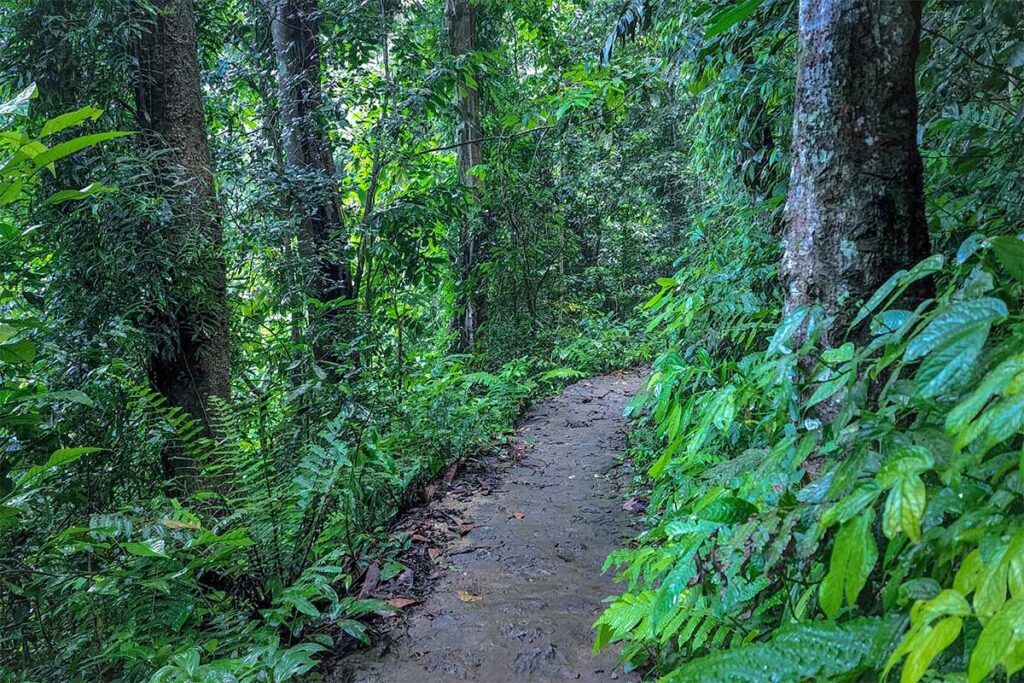
Ten Mountain is the highest peak in Xuan Son National Park, reaching around 1,300 meters. It’s a good full-day hike through forested trails, with steady climbs and a few steeper sections — not technical, but it does require reasonable fitness. The path is not clearly marked, so if you don’t know the area, it’s best to arrange a local guide, which can often be done through your homestay.
The summit offers great views over the forested landscape and is one of the few places in the park where you can really take in the scale of the area.
2. Explore caves
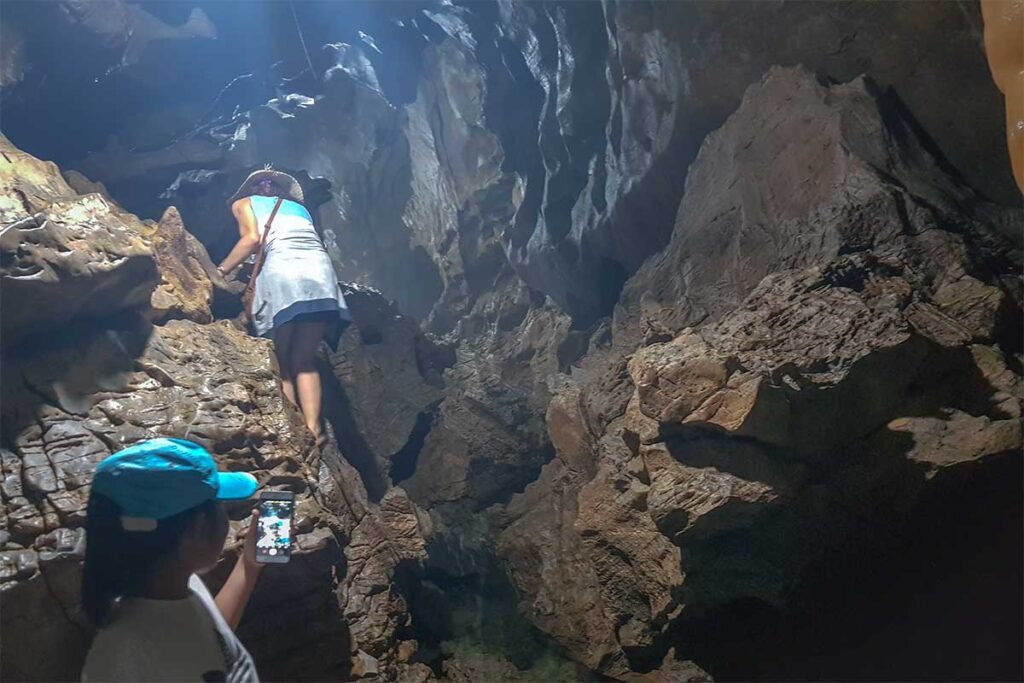
The park is dotted with limestone caves, many of which are still wild and not set up for tourism. Tien Cave is the most well-known — it’s long and cool inside, with a narrow entrance and smooth, damp stone walls. The air stays fresh thanks to a hidden vent leading to the mountaintop.
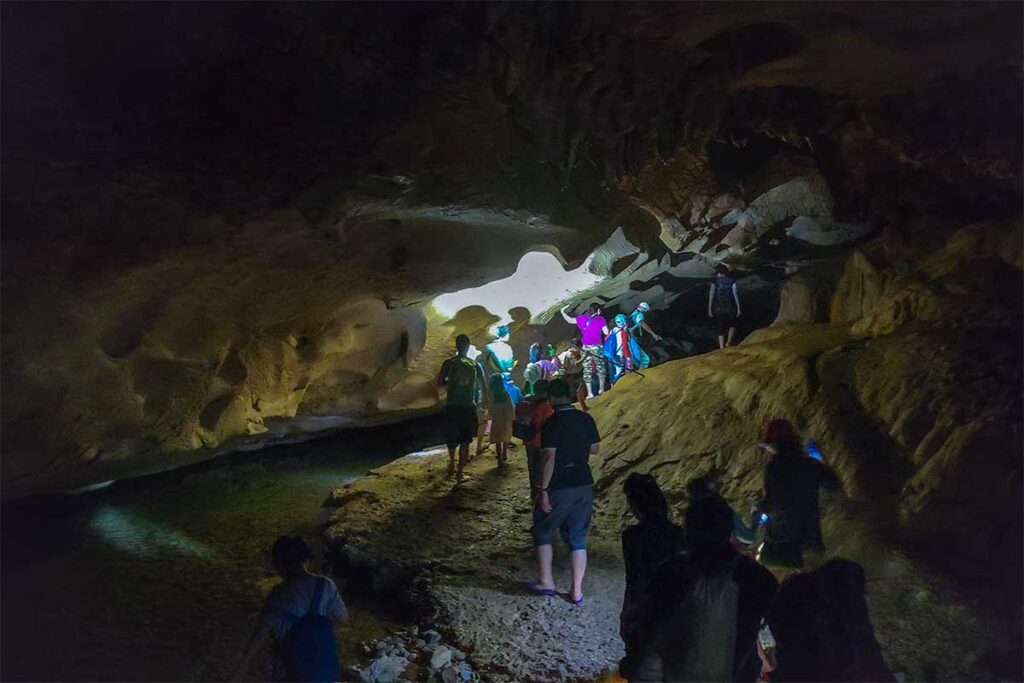
Most caves here are completely dark, with no lights, no signs, and no guards or guides. If you plan to explore one, bring a strong flashlight or headlamp, and only go in if you feel confident. Some are shallow and easy to check out, while others go quite deep and should only be entered with care.
3. Swim in the stream
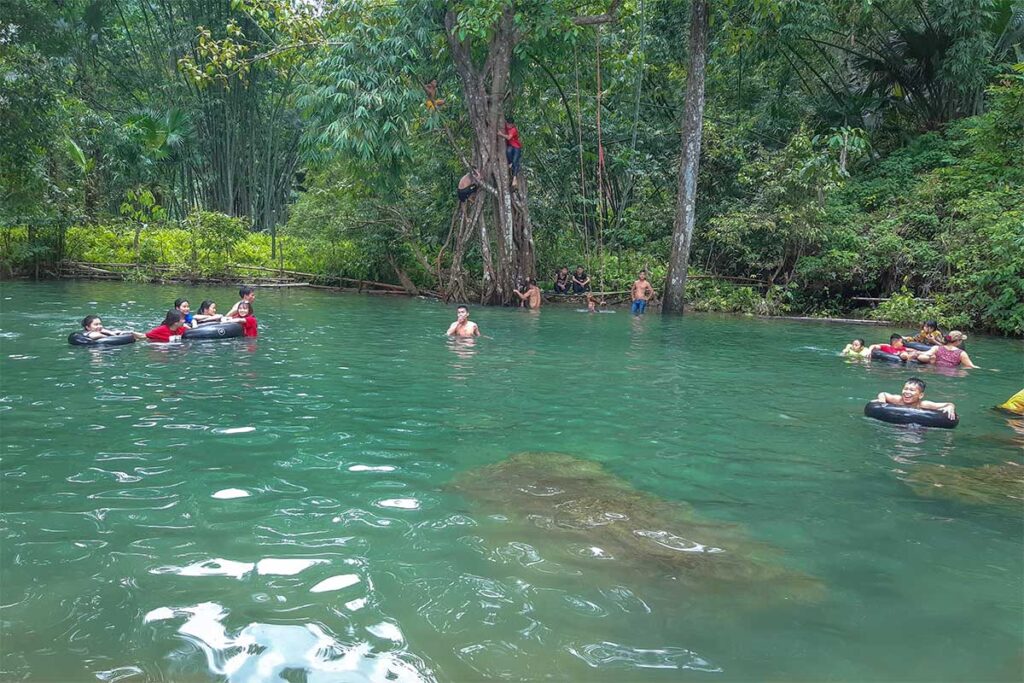
There’s a clear, shallow stream running through the park — and it’s one of the nicest places to cool off, especially in the summer. The water is clean and refreshing, and you’ll often see kids or local families playing nearby.
Some of the homestays are just a short walk away, making it easy to take a quick dip in the afternoon or after a morning hike. It’s not a developed swimming area — no lifeguards or changing rooms — but that’s part of the charm.
4. Ngoc Waterfall
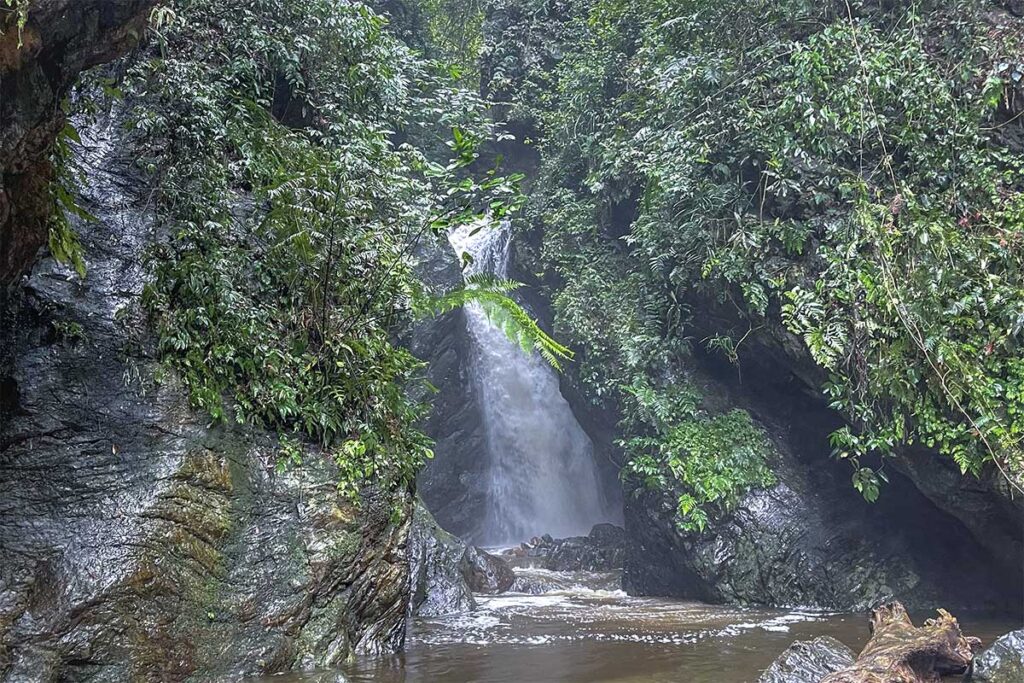
Ngoc Waterfall is a small but peaceful spot hidden in the forest. You’ll need to walk a few kilometers on a mix of paved and dirt paths, and parts of the trail can be slippery or overgrown, especially after rain. The waterfall itself isn’t huge, but the setting is quiet, and you can swim or wade at the base.
Sometimes the path near the entrance is blocked by motorbike taxi drivers hoping to get business. Just politely continue on foot or by bike — there’s no official restriction, and the walk is doable. If it has rained the night before, the waterfall is stronger and more photogenic.
5. Local food & Homestay experiences
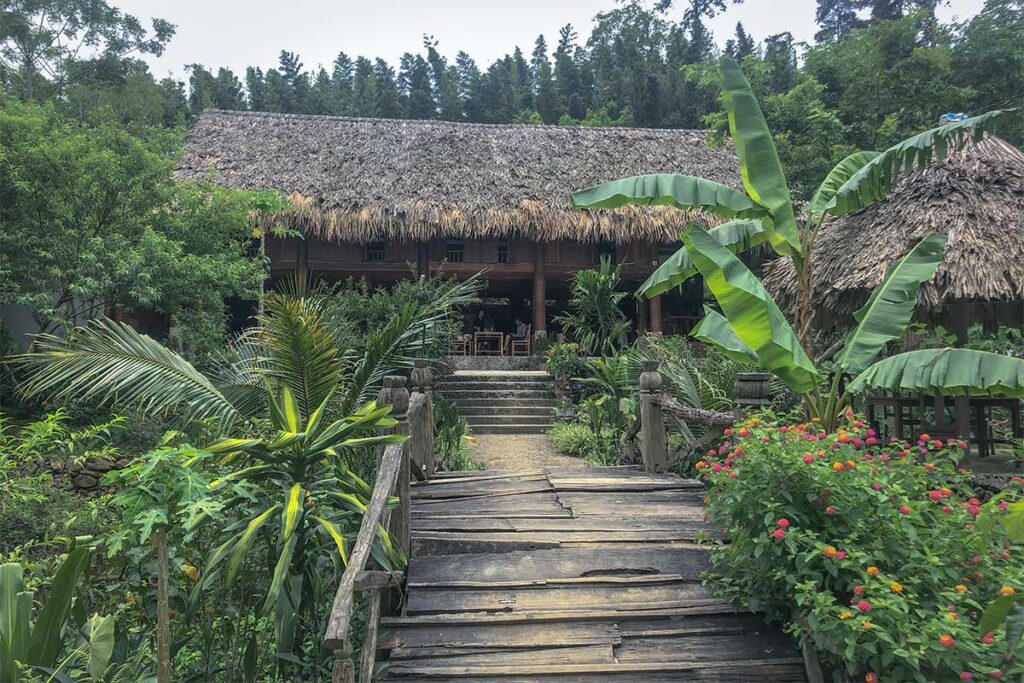
Staying in a local Muong or Dao homestay is one of the highlights of visiting Xuan Son. The houses are usually built on stilts, made of wood, and sit close to rice fields or forest trails. Rooms are simple, but clean and cozy.
Meals are often homemade and included in your stay. You can try grilled chicken, spring fish from the stream, sour pork, and wild greens foraged from the forest. The atmosphere is quiet, and most hosts are friendly and happy to share stories or show you around.
6. Xuan Son Nature Museum (if open)
There’s a small nature museum inside the park with plant and animal specimens, plus models of traditional homes and farming tools. It’s a nice idea in theory, but don’t expect anything fancy — it’s often closed, and when open, may not be staffed.
That said, if you’re passing by and the door is open, it’s worth a short stop, especially if you want a bit more context or meet a park ranger who can offer local advice.
How to get to Xuan Son National Park
Xuan Son National Park is about 120 km from Hanoi, and the drive takes around 3 hours by car or motorbike. Most of the road is paved and in good condition, though you may come across a few rough patches or roadworks as you get closer to the park.
There’s no direct public transport all the way to the park, so the easiest way to get there is by private vehicle. You can either drive yourself or hire a car with driver from Hanoi. If you’re on a motorbike trip, it’s a manageable ride, but be cautious on steep or slippery sections inside the park.
Book a private car to Xuan Son
We can help arrange your transfer from Hanoi and optionally plan your route with stops, nearby sights, or connections to places like Long Coc or Phu Tho.
You can also reach Xuan Son from Phu Tho City or Viet Tri, using local roads or transfers. This option works well if you’re combining your trip with nearby spots like Hung Kings Temple.
If you’re planning to visit Long Coc Tea Hills, it makes sense to combine both — they’re in the same district (Tan Son) and only a short drive apart.
Visiting information and tips
Entrance fee
There is no general entrance fee to visit Xuan Son National Park.
However, some specific spots like caves or waterfall areas may charge a small fee, usually around 10,000 to 20,000 VND per person, to help cover basic maintenance or lighting costs.
Opening times
The park doesn’t have official opening hours, but it’s best to arrive during daylight, roughly between 7:00 and 17:00. Some areas, like caves or viewpoints, can be hard to access or unsafe in the dark, and there’s little to no lighting inside the park.
What to bring
- A flashlight or headlamp, especially if you want to explore caves
- A swimsuit if you plan to swim in the stream or near the waterfall
- Comfortable hiking shoes – many trails are unpaved, and some get slippery
- A raincoat if you’re visiting in the wet season
- Snacks and water, as there are very few shops or restaurants inside the park
How much time you need
- Minimum: A half-day is enough if you just want to go for a walk or take a swim
- Ideal: Spend 1–2 days, especially if you want to hike, explore caves, or stay in a homestay
- Full day is perfect if you’re also visiting Long Coc Tea Hills nearby and want to do both without rushing
Where to stay
The best option is to stay in a local homestay, either inside or just outside the park. Most are Muong-style stilt houses, made of wood and surrounded by forest or rice fields. It’s a simple but cozy way to experience the area and its culture.
Rooms are basic but clean, usually with a mattress, mosquito net, and shared bathroom. Prices range from 200,000 to 500,000 VND per night, often including dinner and breakfast.
Many homestays are close to trails, waterfalls, and swimming spots, so you can walk straight out into nature without needing to drive anywhere.
You don’t always need to book in advance — especially on weekdays — but if you’re going on a weekend or holiday, it’s a good idea to call ahead or message your host to check availability.
There are no big hotels or resorts in the area, so staying local is really the only (and best) option.
Other sights nearby
Xuan Son National Park is in Tan Son District, which makes it easy to combine with a few other interesting places in Phu Tho. If you’re planning a short trip or driving through the region, here are two places worth adding to your route:
Long Coc Tea Hill
Just a short drive from the park, Long Coc is famous for its round, mist-covered tea hills that look like green bowls from above. It’s especially beautiful at sunrise, when the fog lingers in the valleys. You can walk through the tea fields or simply enjoy the view from above.
Read our full guide to Long Coc Tea Hills
Hung Kings Temple Complex
Located about 1.5 to 2 hours away, this is Vietnam’s most important spiritual site, dedicated to the legendary founders of the nation. It sits on a forested mountain with temples, altars, and historical monuments spread across different levels. It’s a major cultural stop and pairs well with a trip through Phu Tho.
Read our full guide to Hung Kings Temple
➤ Want more ideas? Check out our full guide to Things to do in Phu Tho
Is Xuan Son National Park worth visiting?
Xuan Son is not one of the top places to visit in Northern Vietnam, especially if you’re short on time. There’s no single must-see highlight, and the area has very limited tourism infrastructure — no big viewpoints, organized tours, or major landmarks. If you’re choosing between this and places like Sapa, Ha Giang, or Cao Bang, those offer more dramatic scenery and more to do.
That said, Xuan Son is a great stop for the right kind of trip. If you’re on a road trip, or if you enjoy quiet nature, gentle hiking, and local village life, it’s a peaceful and rewarding place to spend a day or two. It also makes sense to visit if you’re already planning to see Long Coc Tea Hills or the Hung Kings Temple, and want to add some forest walks or swimming to your route.
It’s not a bucket-list spot, but it is genuinely relaxing, scenic, and still mostly untouched — which, for some travelers, is exactly the point.
